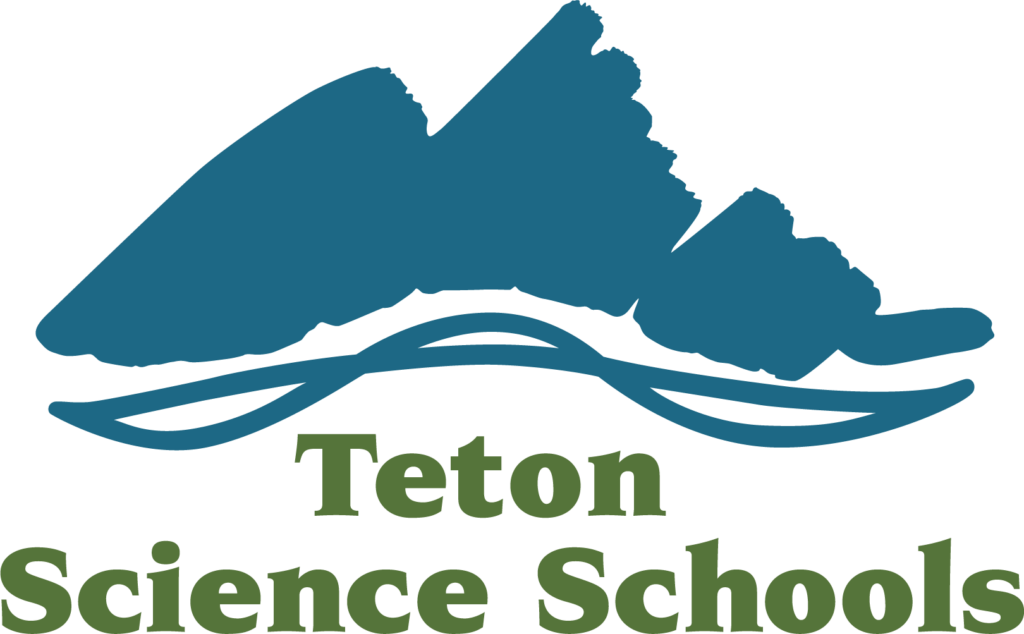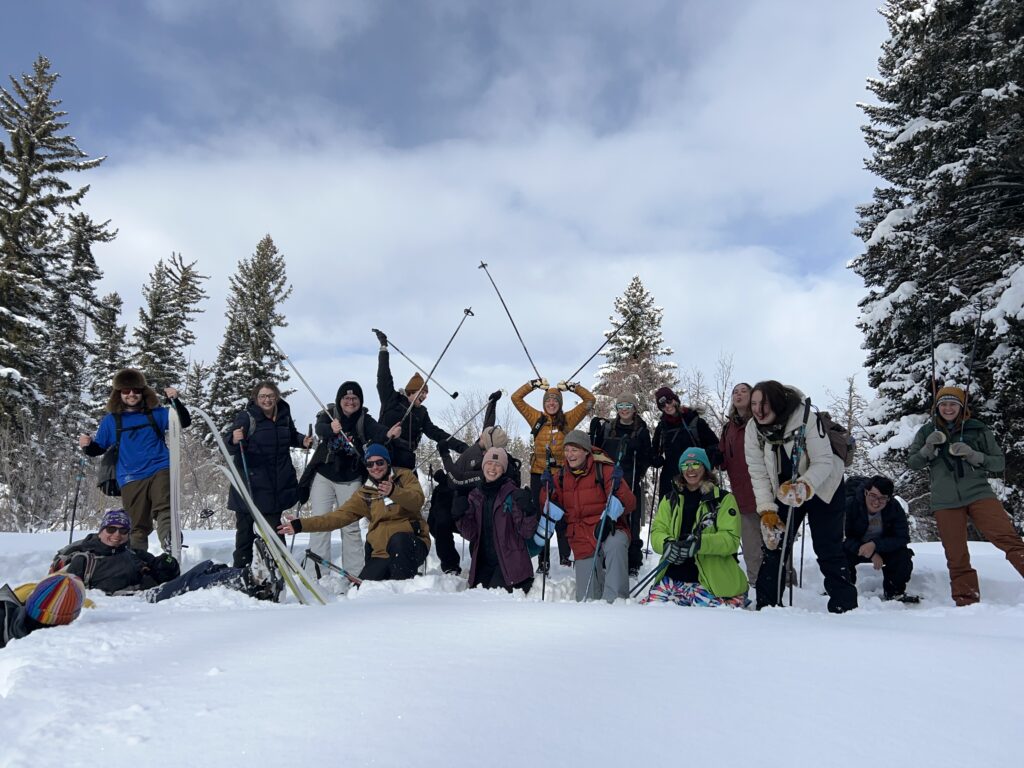Written by Hanna Holcomb, Program Coordinator – Teaching
In early January, fourteen students from the University of Wyoming traveled to the Kelly Campus of Teton Science Schools for a 12-day Winter Ecology course. With guidance from Field Education staff, these undergraduate and graduate students explored several aspects of winter ecology through three course sections: Skills of the Winter Naturalist, Snowpack Dynamics and Snow Science, and Wildlife and Plant Adaptations. Throughout the course, the students continuously inspired us with their curiosity, investment in learning, and care for their community and environment.
Skills of the Winter Naturalist:
In the first section, students focused on making close observations of the natural world while building a strong living and learning community. While traveling on skis or snowshoes, students recorded detailed observations in their field journals – from the minute hairs on the buds of Serviceberry, to the shape of a track left by an ermine. Through their observations, students reflected on how flora and fauna survive in the Tetons’ harsh winter environment and created presentations of their observations, in the form of songs, poetry, and artwork, to share with their peers.

Snowpack Dynamics and Snow Science:
In the second section, students turned their focus to the snowpack. In snowpits, they examined layers of facets, crusts, and rounding grains and discussed the weather conditions that might have created these layers of snow. We explored how snowpack composition can impact wildlife by providing insulation for small mammals in the subnivean environment and by making forage and movement challenging for larger wildlife. We also studied the amount of water contained in the snowpack (Snow Water Equivalent, or SWE) in order to understand how our snowpack might affect water availability in this region and downstream.

Wildlife and Plant Adaptations:
In our third and final section, students studied how winter-adapted flora and fauna are affected by milder winters. They reviewed case studies of local wildlife, like the wolverine, who are affected by warming temperatures and diminished snow totals. On a cross-country ski around the Murie Ranch, students presented their case study and dreamt up solutions for the effects of climate change.
With knowledge and field skills from the three sections, students wrapped up the course with a 2-day research project. Driven by their interest and curiosity, students split into three groups to study the impacts of snow on bison herds, the connection between plant community and wildlife diversity, and how wildlife watchers affect the behavior of bighorn sheep. Despite the time constraint, their questions and findings were fascinating and we thoroughly enjoyed getting to see their hard work presented.
On our final evening together, we drank hot cocoa under the full “Wolf Moon,” and reflected on our two weeks spent together. Students shared gratitude for the opportunity to learn through hands-on experiences and shared a new appreciation for the winter environment.
“This class has made me appreciate winter so much more,” one student said. “I’ve always thought winter was desolate, but I’ve realized there is so much that is alive.”



